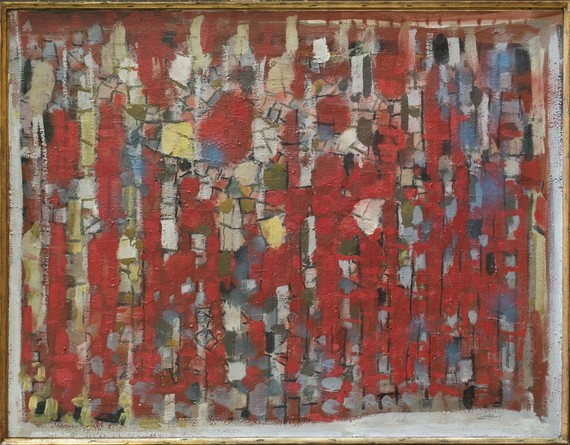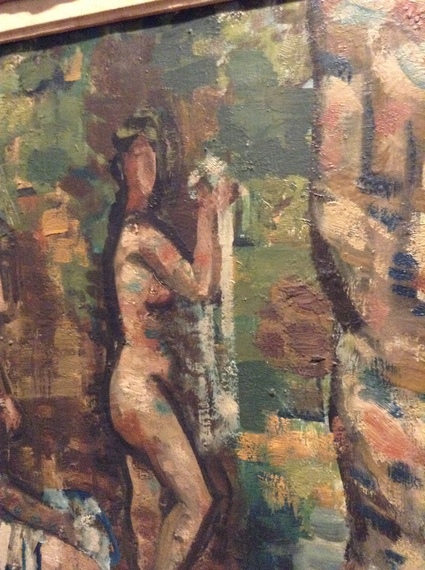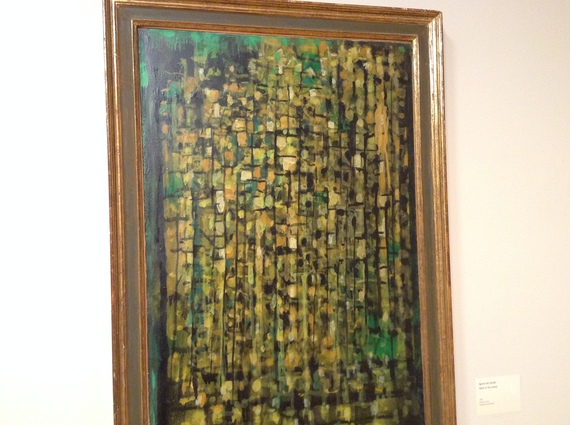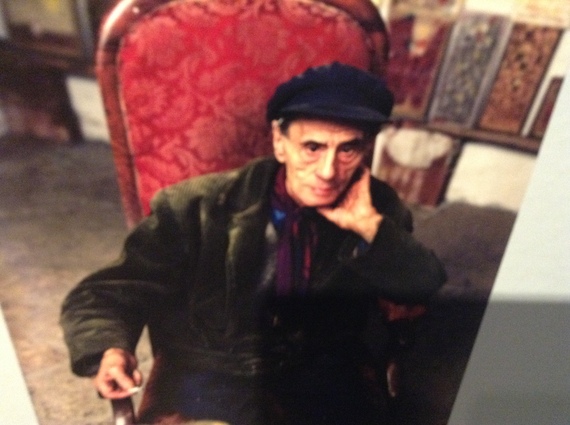BORDEAUX, France -- Here on the shortest, darkest day of the year it felt like Spring while the rest of France shivered under frost. Yet inside Bourdeaux's grand Beaux Arts museum, another Spring had been resurrected -- fifty years after his death Roger Bissière.
Roger who? I asked when I first heard about the exhibition. Roger Bissière is an all but forgotten French painter, unknown in the US, but who at his prime during the post-war years lived and worked at the heart of the revolutionary group of painters that invented modernism -- Juan Gris, Georges Braque, André Lhote and of course Picasso. Three floors of the Gallerie des Beaux Arts have been given over to the largest ever retrospective of Bissière's paintings.
Bissière was everything that the industrialized art machines like Picasso weren't. Picasso would turn out two or three pieces a day, totaling some 30,000 works. Bissière was a painter of mood and internal reflection who as he matured abhorred "the Paris scene" and flashy gallery marketing. Seated in his southwest forest studio, he would spend hours dwelling on his own internal responses to color, form and light, seeking not to "capture" nature but seeking to understand and inhabit his own internal responses to what struck his retina before applying his brush to paper or canvas -- or occasionally collaborating with his wife, Mousse, on tapestries.
As a young painter, Bissière wrestled, not especially imaginatively, with expressionist attention to figurative forms before moving on to fauvist and then cubist geometries.
Possessed of a poetic mind, he regularly reflected on his work and its relationship to his life. Many of his reflections are included on the walls alongside his work at the Beaux Arts gallery. One of the most insightful reads: "I try to create my own world, built out of my own memories, preserving the aromas of the forests that surround me, the color of the sky, the light of the sun and the love I feel for all living things." That said, his best work is neither figurative nor representational. It is more a visual psychoanalytic exploration of his internal experience.
During the war years he painted hardly at all. After the war he looked meditatively inward toward the contest between darkness and light.One of his post-war pieces, a tapestry called "Hiroshima," expresses the violence that inhabited his soul.
A little later he took up other classical themes, including the Crucifixion and other Christian motifs, not out of a conventional religious attachment but as a reflection on the horror and exhilaration those events continue to evoke as human episodes.
As he caught up with age, and after the death in 1962 of his lifelong passion, Mousse, he found himself concentrating on simple forms, sticks and twigs and other objects of the forest, relentlessly focused on the dance between light and shadow, until the final shadow came not long after he was chosen as France's official entry in the 1964 Venice Biennale.
In once sense, Bissière is a natural for Bordeaux's Beaux Arts museum; though far from the most famous of Bordeaux's painters, in death as in life, he stands apart from the rest. Apart in his distaste for the fashion of the moment and apart from the temptation of so many to rest safely within a singular form that would guarantee him a safe and unchanging niche in formal art history. Indeed if there is a criticism to be made of Roger Bissière's visual pursuits, it is that throughout his life he followed too many roads, too many esthetic tendencies as the 20th century progressed before he settled into to the solitude where broken light and shadow led him to the interiority of his soul.
All uncredited photos by Frank Browning






